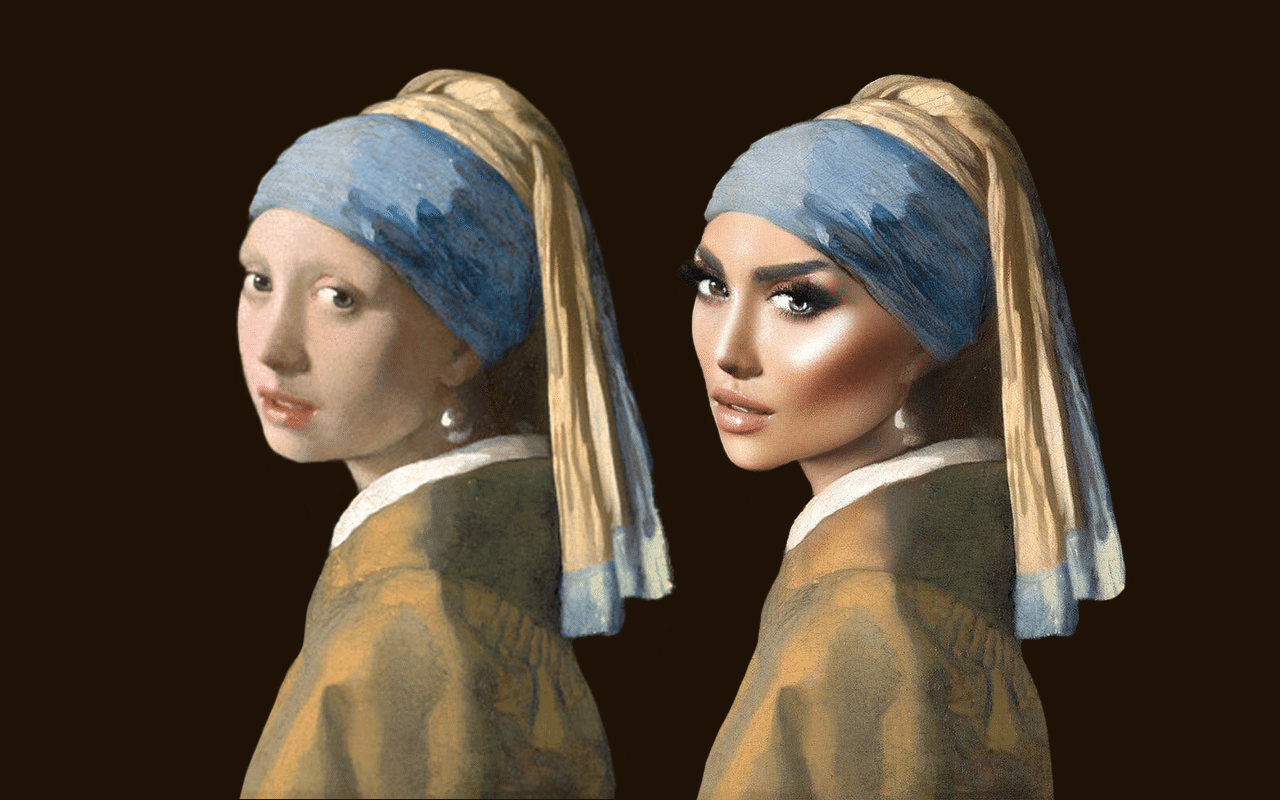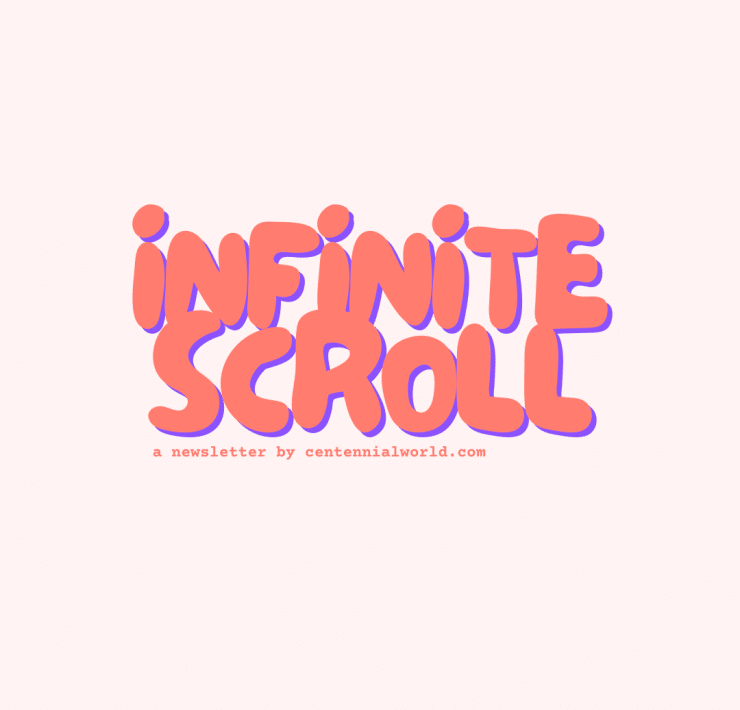
We have officially entered the ‘era of Yassification:’ a world where Abraham Lincoln is known as “Slayabraham Lincoln“, Bernie Sanders “slay(s) the rich,” and the Girl With a Pearl Earring looks like an influencer you would follow on Instagram.
If you have been online over the past couple of weeks, chances are you are familiar with Yassification. For those who have yet to come across the ‘yassified’ side of social media, Yassification is essentially a digital transformation using photo-editing apps. Smoothing skin, plumping lips and blurring imperfections, the difference between the ‘before’ and ‘after’ pictures must be shocking, but also glamourous.
As these heavily edited and filtered pictures of celebrities dominate our Twitter timelines, a broader question remains unanswered: what does this trend say about beauty standards on social media?
Where did Yassification come from?
To truly understand the Yassification trend, we must first acknowledge its roots in LGBTQIA+ culture and community. From Vine to TikTok, the word ‘Yass’ is seemingly ubiquitous in the digital space— often used as an emphatic “yes” or “yay.” According to Urban Dictionary, the word can be “used at any occasion and at any time and place”.
However, the origins of ‘Yass’ in contemporary pop culture are hotly contested among internet users. Some attribute its popularity to a viral video of Lady Gaga with a fan yelling, “Yaaas Gaga, you look so good!” in the background. Others claim Ilana Glazer’s character in Broad City, Ilana Wexler, normalised the phrase.
In reality, ‘Yass’ originated with Queer people of colour through 1960s Ballroom Culture. Emerging in New York City, Black and Latin members of the LGBTQIA+ community hosted underground competitions and events, allowing people to express themselves in a safe space outside the confines of a racially and sexually oppressive society. As Jenna Amatulli writes for HuffPost, “[Yass became] an exclamation that acted as an encouragement ― a message of support and inclusion.”
With this in mind, the internet’s obsession with Yassification is simply another way for mainstream trends to capitalise upon queer culture.
Skyrocketing Yassification to virality was @YassifyBot on Twitter. Created in November 2021 by 22-year-old art student Denver Adams, the account has garnered over 162.5k followers.
Scrolling down @YassifyBot‘s profile, you will find the ‘yassified’ version of memes, celebrities, and even historical figures and art. But what does the process of ‘Yassification’ entail? As Denver tells Teen Vogue, “All it is, is just me putting it (a photo) into FaceApp and putting as many of the beauty filters on — or, I guess, what FaceApp deems to be beauty — onto these images and cranking it up to 100, layering it.”
— Yassify Bot (@YassifyBot) November 14, 2021
— Yassify Bot (@YassifyBot) November 21, 2021
However, what has been described as the ‘Great Yassification’ is not exclusive to the Twitterverse. Over the past couple of weeks, TikTok users have also embraced the glorious world of Yassification.
At the time of publication, #Yassification has accumulated over 49 million views on TikTok, with other hashtags like #Yassified at 6.8 million (and counting). While these hashtags are not associated with a specific audio or trend, most videos show users yassifying themselves or sharing pictures of celebrities post-yassification.
Yassification appears to satirise the internet’s obsession with filters
Taking filters to the extreme, the Great Yassification parodies the unrealistic beauty standards coming from heavily edited photos posted on social media. With the @YassifyBot‘s rise to viral stardom coinciding with the growth of TikTok’s Clean Girl, it is no surprise that many Internet users jumped on the Yassification bandwagon.
For those yet to encounter the elusive Clean Girl, she is essentially the newest iteration of That Girl a.k.a, the woman who can do it all. Originating with TikTok creator @EvaRankiin, the Clean Girl aesthetic favours fresh-faced beauty and the model-off-duty look.
Replying to a comment that read, “you look so clean,” Eva filmed a tutorial on how to achieve “the clean look,” and so, the Clean Girl was born.
@evarankiin Reply to @yoodaddydre how to achieve the ✨clean✨ look ib: @millieleer #cleanmakeup
♬ Manhattan – Ella Fitzgerald
With luminous skin, a light application of mascara and slicked-back hair considered Clean Girl approved, this aesthetic exists in direct opposition to the full glam makeup trends of years past — 2016 Instagram eyebrows, I am looking at you.
However, the shift to this specific “no-makeup makeup” look has proven to be extremely exclusionary. Personified by models such as Hailey Bieber and Gigi Hadid, the ultimate Clean Girl is defined by whiteness and wealth. With these racist and elitist undertones, the Clean Girl aesthetic is virtually unattainable for most women.
While the Great Yassification parodies the filtered pictures that flood our Instagram feeds, it simultaneously adds to an exclusionary discourse concerning beauty standards. Emerging alongside a trend favouring “natural” beauty, albeit only a specific version, Yassification is more sinister than it may seem at first glance.
In an interview with Paper, Denver characterises the trend as misogynistic, questioning why “glamorous” celebrities like Lady Gaga should be yassified. “Are you not rooting for them unless they look like this? Like why do people think that’s funny?” they went on to say.
With this in mind, Yassification continues to uphold hyper-feminine perceptions of beauty where the trend’s attempt to satirise unrealistic beauty standards ultimately falls short.
Yassification favours Eurocentric facial features
While we may see the humour in a picture of Abel Tesfaye, otherwise known as The Weeknd, looking more like Kim Kardashian than his usual self, there is something to be said about the beauty filters on FaceApp and how they change facial features.
Twitter users have long criticised the editing application for perpetuating Eurocentric beauty standards. From making noses “sharper” to automatically lightening skin tones, “yassifying” people of colour on FaceApp often makes them look Caucasian, rather than enhancing their natural features.
So the Faceapp just makes your nose sharper(less round) and makes your skin tone a shade lighter? I can't be the only one that sees this as a problem, why must we have Eurocentric features to be beautiful? 🤔 Aren't you guys noticing how anti black these things tend to be?
— 🗨️ (@Ky_Mar_) November 19, 2021
🤷♂️
Denver has since commented on the racist tendencies of FaceApp’s beauty filters. “From what I’ve seen, sometimes it’s just really gross when you put a person of colour in there,” they said. “I put the person in and use all the same settings … but the app just turns them into a Caucasian person. It’s not funny anymore, it just makes me sad.”
Techno-racism isn’t new, but the Yassification phenomenon reveals how glam filters are simply another way to assert Eurocentric ideals and undermine Black beauty and bodies in the process. So while this viral Twitter meme may be jovial in nature, the constructs it has unearthed have been problematic from the start.


